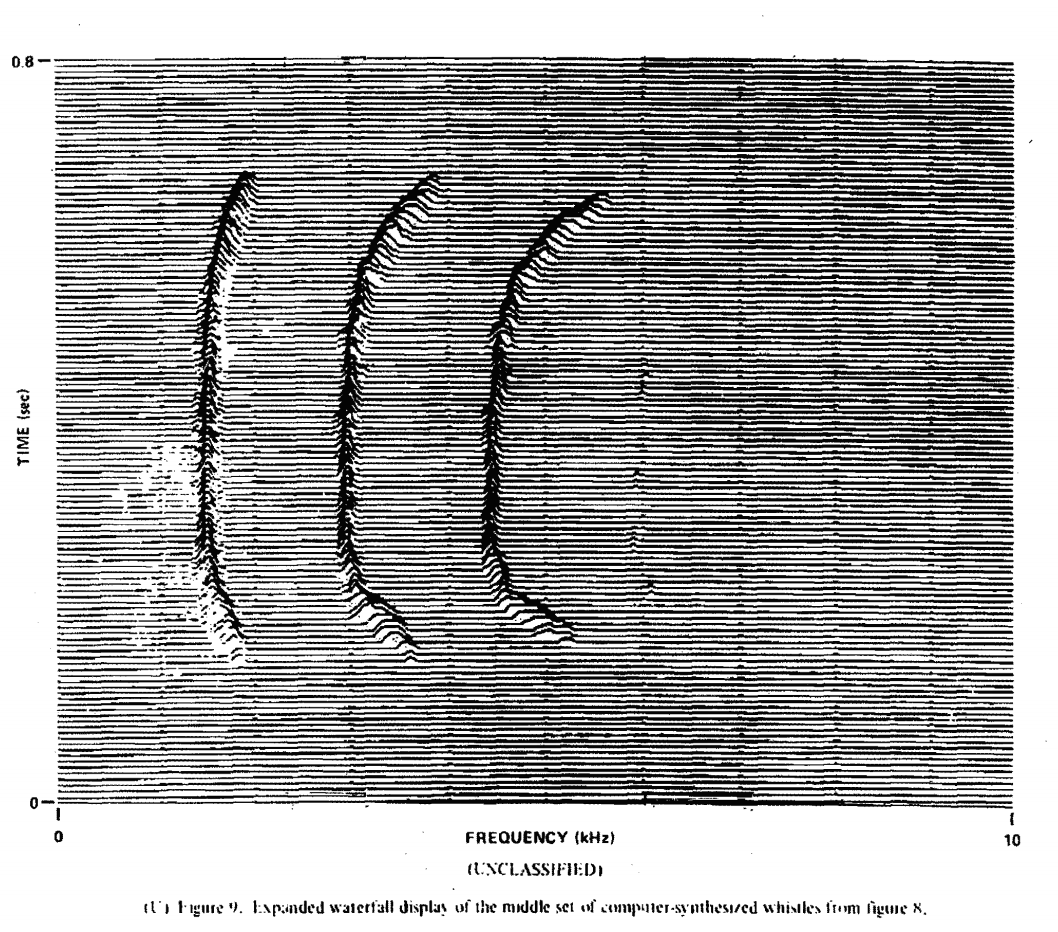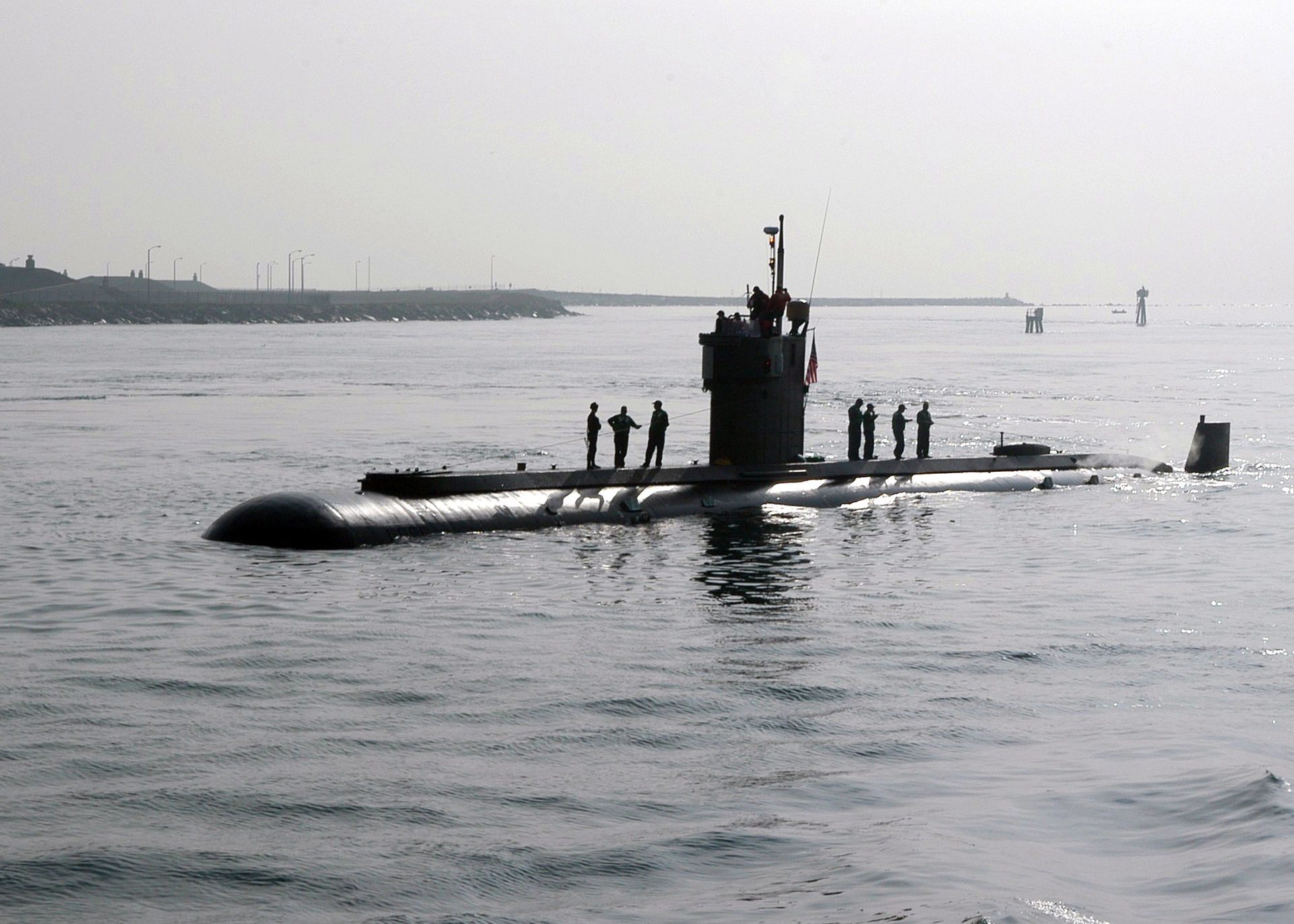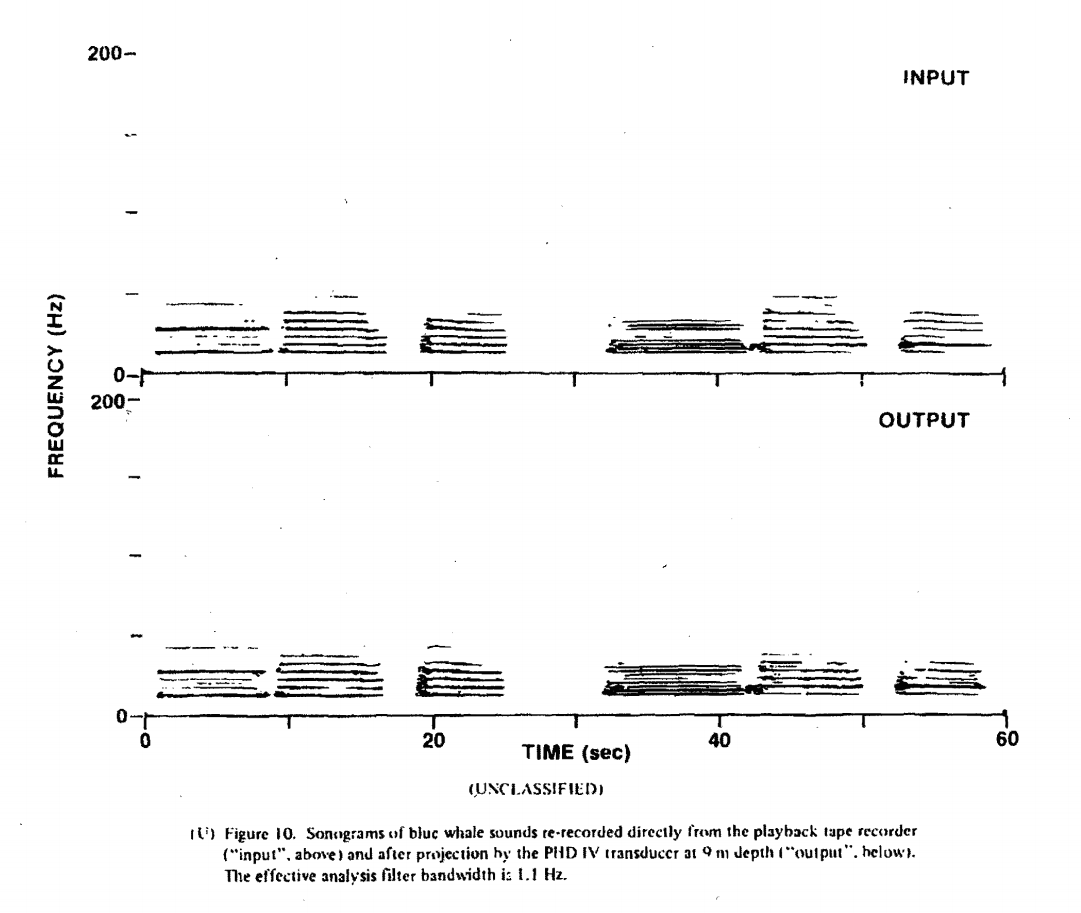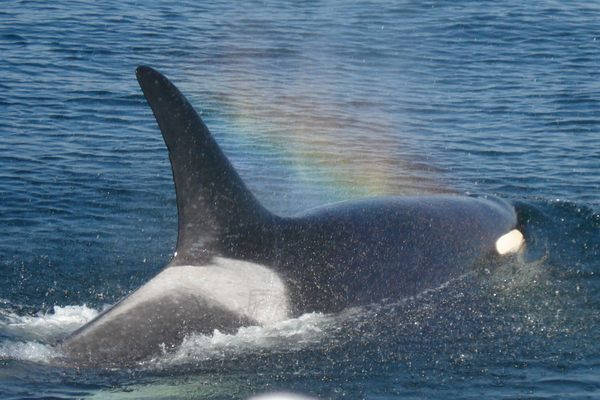In the 1970s, the U.S. Navy Tried to Talk Like Whales
A recently declassified report reveals that Cold War submarines almost chirped and whistled.

In the summer of 1974, a pod of pilot whales swimming near California’s Catalina Island heard some unexpected sounds. Coming through the water was a familiar set of messages—swooping whistles, keening cries, and zippy chirps. It sounded like a pilot whale, but not one they had ever heard before, and talking absolute gibberish. As they swam up to investigate, they must have realized their mistake. This wasn’t a pilot whale. It was a U.S. Navy submarine—150 feet long, made of titanium, and speaking their language.
Look back into U.S. military history, and you’ll find a menagerie of animals—bomb-carrying bats; bioengineered spy cats; pigeons trained to rescue soldiers lost at sea. A newly declassified report housed at Government Attic reveals another attempt at zoological mastery: Project COMBO, a plan to let U.S. submarines have underwater conversations by disguising them as whale sounds.
During the Cold War, military researchers had to figure out how to look, listen, and communicate deep beneath the sea. For inspiration, they often turned to marine creatures. The U.S. studied beluga whales, which echolocate, to beef up their own sonar capabilities. They trained a bottlenosed dolphin named Taffy to carry equipment and lead divers to safety. The Soviet Union had, essentially, suicide-bomber dolphins, which would dive under ships with bombs strapped to their backs. Scientists on both sides thought bioluminescent plankton might help with submarine detection.


Project COMBO was an attempt to address a perplexing Cold War problem: It’s difficult to communicate quietly with a submarine. High-frequency radio waves, the messaging medium of choice for armies and navies, don’t travel well through salt water. Low-frequency ones are better, but sending them out requires massive broadcast antennae, so most submarines can only receive messages in this format, and can’t answer back. And although regular sound waves broadcast well, they can be easily intercepted—even sending a simple “hello” to a friend risks giving away your position to an enemy.
In 1959, experts at the Naval Electronics Laboratory realized that some denizens of the deep were communicating just fine underwater, and over great distances: whales and seals. If American submarines could make their own animal calls, and associate each with a simple message, they could talk to each other without blowing their own cover. A certain click might mean “I’m a friend,” while a particular whistle was “follow me.” The messages would be “but a small portion of the total biological chorus,” the recently declassified report assured. The Soviets, used to the undersea cacophony, wouldn’t suspect a thing.
So once again, the military set out to steal some animal secrets. In 1965, researchers took to the seas, studying species and recording sounds to determine which would best suit their purposes. For maximum effectiveness, they were looking for “cosmopolitan” whales, comfortable in all parts of the ocean. The sounds had to be relevant throughout the year—no mating calls, for example. “Well-known dialects” should be avoided, too, in case a savvy interceptor noticed, say, a Caribbean-accented whale in the Pacific.
The Navy came up with a three-part longlist of whale and seal species whose sounds would work best. For large whales—a good option in noisy seas—the humpback came out on top, thanks to its large menu of “howls, moans, grunts, cries, yelps, and low-frequency pulses,” and a tendency to sing for hours at a time. The wide-ranging pilot whale won out among small ones. (Orcas, with their “raucous screams,” came in second.) Thanks to their small, coast-hugging ranges, the pinnipeds—seals and sea lions—were all wildcards, suitable only for specific regional conversation.
For the test, the Navy chose the pilot whale, which offered a variety of warbles, whistles, and squeaks. Using their recordings, a minicomputer, and sound generation software, they synthesized six different pilot whale sounds, although they imagined more were possible—maybe even a “code of the day,” they wrote. They also synthesized a background “ocean chorus,” which served as extra camouflage in case the real ocean was too quiet.
On the receiving side, submarines were already equipped with spectrographs, which transform incoming sound waves into visual charts. Since the coded pilot whale sounds were synthesized, and therefore identical, receiving and decoding them was merely a matter of recognizing a particular pattern as it came through the machine. A real whale’s call, with its unique combinations of pitch and timbre, would produce a slightly different readout, and could be weeded out as noise with the help of recognition software.

In the summer of 1973, with everything in place, the Navy hit the ocean with the new sounds. Positioning themselves off of Catalina Island, 150 feet underwater, they blasted their squeaky, warbly codes through a transmitter. The receiver, placed at varying distances away, plucked the messages out of the noise flawlessly. Another test, in the fall, went deeper down and extended the range. In June of 1974, they sent out a real submarine, the USS Dolphin, which successfully transmitted sounds to a receiving ship—and, in a true vote of confidence, attracted a pod of pilot whales.
After these testing successes, researchers were left with a lot of work to do. Although they had the pilot whale on lock, they wanted to expand their repertoire by inventing “techniques and equipment to synthesize large whale sounds and small whale screams.” They still had to create scalable versions of their tools, including the call generator and the spectrograph-recognizer. Looking ahead, more problems loomed: the researchers figured this was a good enough idea that the Soviets would steal it, at which point American submariners would need to add another skill to their arsenal. “Fleet sonarmen must become more familiar with bioacoustic signals,” they wrote—inspiring thoughts of submarine soldiers, facing long days underwater, taking up sonic seal- and whale-watching.

But their hopes, alas, were too high. “It was never successful,” writes Dr. Christopher Willes Clark, founder of the Cornell Bioacoustics Research Program, in an email. “The process of projecting coded ‘whale’ sounds out to functional distances is not viable.” Despite the promise of those initial tests, the technological barriers proved too large to overcome, and subsequent attempts in future years also failed. By now, Clark writes, there are better ways to accomplish the same goal—laser communication, for instance.
Even if the technology had worked out, a few sentences in the report betray another concern that could have sunk the project: for whale sound signals to be properly clandestine, there need to be actual whales around to camouflage them. Although the report points out the necessity of tracking whale numbers, it assumes that “conservation measures should guarantee populations at least as large as present ones.” Instead, in the years since 1975, plenty of whale populations—including the screaming orca and the prolifically musical humpback—have declined, partly due to Navy research, which, until recently, was killing them with ultra-loud sonar. Even if Project COMBO failed, we can learn from it: If we want to secure ourselves with whale technology, we’ve got to protect them, too.
Naturecultures is a weekly column that explores the changing relationships between humanity and wilder things. Have something you want covered (or uncovered)? Send tips to cara@atlasobscura.com.






















Follow us on Twitter to get the latest on the world's hidden wonders.
Like us on Facebook to get the latest on the world's hidden wonders.
Follow us on Twitter Like us on Facebook